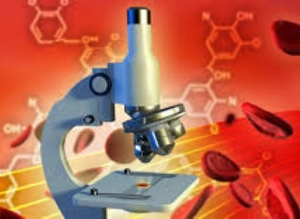Live Blood Cell Analysis

Exclusive to PMA Members and NO fee.
Live Blood Analysis is a simple procedure for obtaining a quick and accurate assessment of your blood. With only a drop of blood taken from your finger, the analysis is able to provide a composite of over 25 aspects from your live blood. It can reveal the state of health and demonstrate how diet and nutrition can lead to significant changes in the blood and therefore to better health. This can be a power tool for client education.
Live blood cell analysis is carried out by placing a drop of blood from the client’s fingertip on a microscope slide under a glass cover slip. The slide is then viewed at high magnification with a dark-field microscope that forwards the image to a television monitor. Both practitioner and client can then see the blood cells.
By observing living blood under a microscope, we can get a real time, dynamic and concrete visual perspective of the state of our internal biological terraine, or body ecology. This is simply a way to add more understanding to the puzzle of health, with its many little bits and pieces.
Looking at blood under a microscope is an incredible learning tool and begins a journey whereby we begin to understand there are dynamic Life processes going on every second in our bodies. It is an environment that is an ever changing canvas of life that holds forms that develop and grow.
So what is the importance of looking at live blood as opposed to blood that is sent off to a laboratory? Blood that arrives at the lab is dead blood that is examined from which various counts and information is gathered. Live cell analysis, however, looks at blood the way it is flowing through your veins, arteries, capilaries and vessels.
Blood The River of Life
Let take a look at the different types of blood cells and their roles in the human body. Blood is a mixture of two things: cells and plasma. The heart pumps blood through the arteries, capillaries and veins to provide oxygen and nutrients to every cell of the body. The blood also carries away waste products. The adult human body contains approximately 5 liters of blood. It makes up 7 to 8 percent of a person’s body weight. Approximately 2.75 to 3 liters of blood is plasma and the rest is the cellular portion. Plasma is the liquid portion of the blood. Blood cells like red blood cells float in the plasma. Also dissolved in plasma are electrolytes, nutrients and vitamins (absorbed from the intestines or produced by the body), hormones, clotting factors, and proteins such as albumin and immunoglobulins (antibodies to fight infection).
The cellular portion of blood contains red blood cells (RBCs), white blood cells (WBCs) and platelets. The RBCs carry oxygen from the lungs. The WBCs help to fight infection, and platelets are parts of cells that the body uses for clotting. All blood cells are produced in the bone marrow.
Red blood cells (RBCs), are by far the most abundant cells in the blood. RBCs give blood its characteristic red color. RBCs account for approximately 40 to 45 percent of the blood. This percentage of blood made up of RBCs is a frequently measured number and is called the hematocrit. The ratio of cells in normal blood is 600 RBCs for each white blood cell and 40 platelets.
Many features of the red blood cells are visible including roundness, separation vs stickiness and uniformity in size and shape vs deformity. Red blood cells are the instrument that carries oxygen, nutrients and hormones into the system and pull waste products and carbon dioxide from the system. They are formed in the bone marrow and enter into the blood stream where they live for 120 days.
White blood cells can also be observed in a live cell analysis. White blood cells are also referred to as WBCs or leukocytes. They are the cells that make up the majority of the immune system, which is the part of the body that protects itself against foreign substances and various types of infections. Leukocytes are made in the bone marrow from multipotent cells called hematopoietic stem cells. Leukocytes exist in all parts of the body, including the connective tissue, lymph system, and the bloodstream. There are five different types of white blood cells, each of which has a different functions in the immune system.They are: Neutrophils, Eosinophils, Basophils, Lymphocytes, and Monocytes.
Platelets (thrombocytes) help blood to clot by forming something called a platelet plug. The other way that blood clots is through coagulation factors. Platelets also help to promote other blood clotting mechanisms. Platelets are formed in the bone marrow from very large cells called megakaryocytes, which break up into fragments. These cellular fragments are platelets. They do not have a nucleus and do not reproduce.